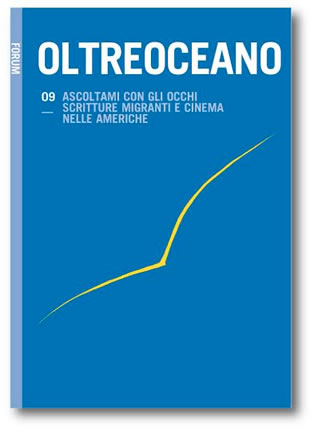Los gauchos judíos en la literatura y el cine argentinos
Keywords:
literatura, cine, ebreos-argentinosAbstract
Dedicado a la vida de los pioneros en las colonias agrícolas argentinas Los gauchos judíos (1910) de Gerchunoff es el texto fundador de ese específico grupo étnico. La figura del gaucho judío vuelve a aparecer en textos y en películas confirmando la vigencia actual de una asimilación que no implica aculturación completa. Metáfora emblemática de la conjugación de lo múltiple, el gaucho judío se ha transformado en el ícono del hibridismo identitario al cual estaríamos destinados los ciudadanos globalizados contemporáneos.
Jewish Gauchos in Argentinian Literature and Cinema
The figure of the Jewish gaucho in Argentine contemporary literatura and films confirms the current validity of an assimilation that does not imply a complete acculturation. An emblematic metaphor of the conjugation of the multiplicity, the Jewish gaucho has become the icon for the cultural hybridity to which the contemporary globalized citizens are destined to.
I gauchos ebrei nella letteratura e nel cinema argentini
La figura del gaucho ebreo che ricompare nei romanzi e film argentini conferma l’attualità di un’assimilazione incompleta. Metafora emblematica della coniugazione della molteplicità, il gaucho ebreo si è trasformato nell’icona dell’ibridismo identitario al quale sarebbero destinati i cittadini globalizzati.
Downloads
References
Agresti, A. (Dir.) (2002): Valentín. Argentina & Paesi Bassi. Film.
Aizemberg, E. (2000): Introduction. En E. Aizemberg, Parricide on the Pampa? A New Study and Translation of Alberto Gerchunoff’s Los gauchos judíos (pp. 11-29). Madrid/ Frankfurt: Vervuert / Iberoamericana.
Avni H. (2005): Argentina y las migraciones judías. De la Inquisición al Holocausto y después. BuenosAires / Jerusalem: Amia / Universidad Hebrea de Jerusalem.
Avni H. (1995): Antisemitismo in Argentina: las dimensiones del peligro. En L. Senkman & M. Sznajder (Eds.), El legado del autoritarismo. Derechos humanos en la Argentina contemporánea (pp. 197-216). Buenos Aires: Nuevohacer.
Burman, D. (Dir.) (1995): Un crisantemo estalla en cinco esquinas. Film.
Burman, D. (Dir.) (2000): Esperando al Mesías. Film.
Burman, D. (Dir.) (2001): Siete días en el Once. Documental.
Burman, D. (Dir.) (2003): El abrazo partido. Film.
Burman, D. (Dir.) (2006): Derecho de familia. Film.
Blaustein, D. (Dir.) (2007): Haciendo patria. Documental.
Burman, D. (Dir.) (2012): La suerte en tus manos. Film.
Cozarinsky, E. (Dir.) (2013): Carta a un padre. Film.
Feierstein, R. (2006): Historia de los judíos argentinos. Buenos Aires: Galerna.
Forman, M. (Dir.) (1979): Hair. Film.
Freidenberg, J. (2013): La invención del gaucho judío. Villa Clara y la contstrucción de la identidad argentina. Buenos Aires: Prometeo Libros.
Gerchunoff, A. (2003): Los gauchos judíos. San Salvador de Jujuy: Arenal.
Goity, E. (1994): Juan José Jusid. En C. España (Ed.), Cine argentino en democracia: 1983-1993 (pp. 87-88). Buenos Aires: Fondo Nacional de las Artes.
Imar, V. & Trotta, M. (Dir.) (2002): Legado. Documental.
Jewinson, N. (Dir.) (1973): Jesus Christ Superstar. Film.
Jusid, J. J. (Dir.) (1975): Los gauchos judíos. Film.
Jusid, J. J. (1975): Entrevista acerca de los gauchos judíos. Recuperado de www. youtube. com/ watch? v=65S--MoK6EY
Lerner, N. (1995): Las raíces ideológicas del antisemitismo en la Argentina y el nacionalismo. En L. Senkman & M. Sznajder (Eds.), El legado del autoritarismo. Derechos humanos en la Argentina contemporánea (pp. 195-207). Buenos Aires: Nuevohacer.
Lichtman, G. (Dir.) (2005): Judíos en el espacio. Film.
Menis, M. V. (Dir.) (2008): La cámara oscura. Film.
Mignogna, E. (Dir.) (1996): Sol de otoño. Film.
Ottone, A. (Dir.) (2001): Un amor en Moísesville. Film.
Robbins, J. & Wise, R. (Dir.) (1961): West Side Story. Film.
Rocco, F. (2012): Reivindicación étnica y centenarios: los gauchos judíos. En C. Cattarulla & I. Magnani (Eds.), Escrituras y reescrituras de la Independencia (pp. 53-68). Buenos Aires: Corregidor.
Rocco, F. (2012): Marginalia ex-centrica: viaggi/o nella letteratura argentina. Venezia: LT2.
Sadow S. A. (2002): La colonia judía a través del prisma de la ficción argentina actual. En R. Feierstein & S A. Sadow (Eds.), Recreando la cultura judeoargentina. 1894-2001: en el umbral del segundo siglo (s.p.). Buenos Aires: Milá.
Sapir, E. (Dir.) (1996): Picado fino. Film.
Sharman, J. (Dir.) (1975): The Rocky Horror Picture Show. Film.
Sneh, P. (2007): Alberto Gerchunoff, entre el nombre y el pronombre. En A. Gerchunoff, Los gauchos judíos / El hombre que habló en la Sorbona (pp. 9-37). Buenos Aires: Colihue.
Szwarcbart, H. (2007): Un pogrom en Buenos Aires (documental).
Tal, T. (2010): Terror, etnicidad y la imagen del judío en el cine argentino contemporáneo. Nuevo Mundo. Recuperado de http: nuevomundo.revues.org/58355?Lang=en#tocto1n5.2010
Tinazzi, G. (2007): La scrittura e lo sguardo. Cinema e letteratura. Venezia: Marsilio.
Downloads
Published
How to Cite
Issue
Section
License

This work is licensed under a Creative Commons Attribution-NonCommercial-ShareAlike 4.0 International License.
The authors undertake to comply with the following conditions, which are considered accepted at the time of submission of their contributions.
The sending of a text implies that it is unpublished and not submitted to be published elsewhere.
1. If accepted, the author shall confer on the publisher the right to publish and distribute it both in paper form and in the online electronic edition. The published articles will be downloadable and made available in open access.
2. Provided that it correctly indicates that the first publication took place in the journal Oltreoceano. Rivista sulle migrazioni the author has the right to: a) reproduce the article in separate extracts or collected in a volume; b) publish the article on their personal website or teaching site provided that these sites are of a non-commercial nature; c) deposit the article in online archives of a non-commercial nature, linked to the institution they belong to or as part of projects for the non-commercial dissemination and open access of scientific works.
The use of contributions by third parties, for commercial or otherwise unauthorized purposes, is not allowed. The publisher declines all responsibility for the unauthorized use of the material published in the journal.












